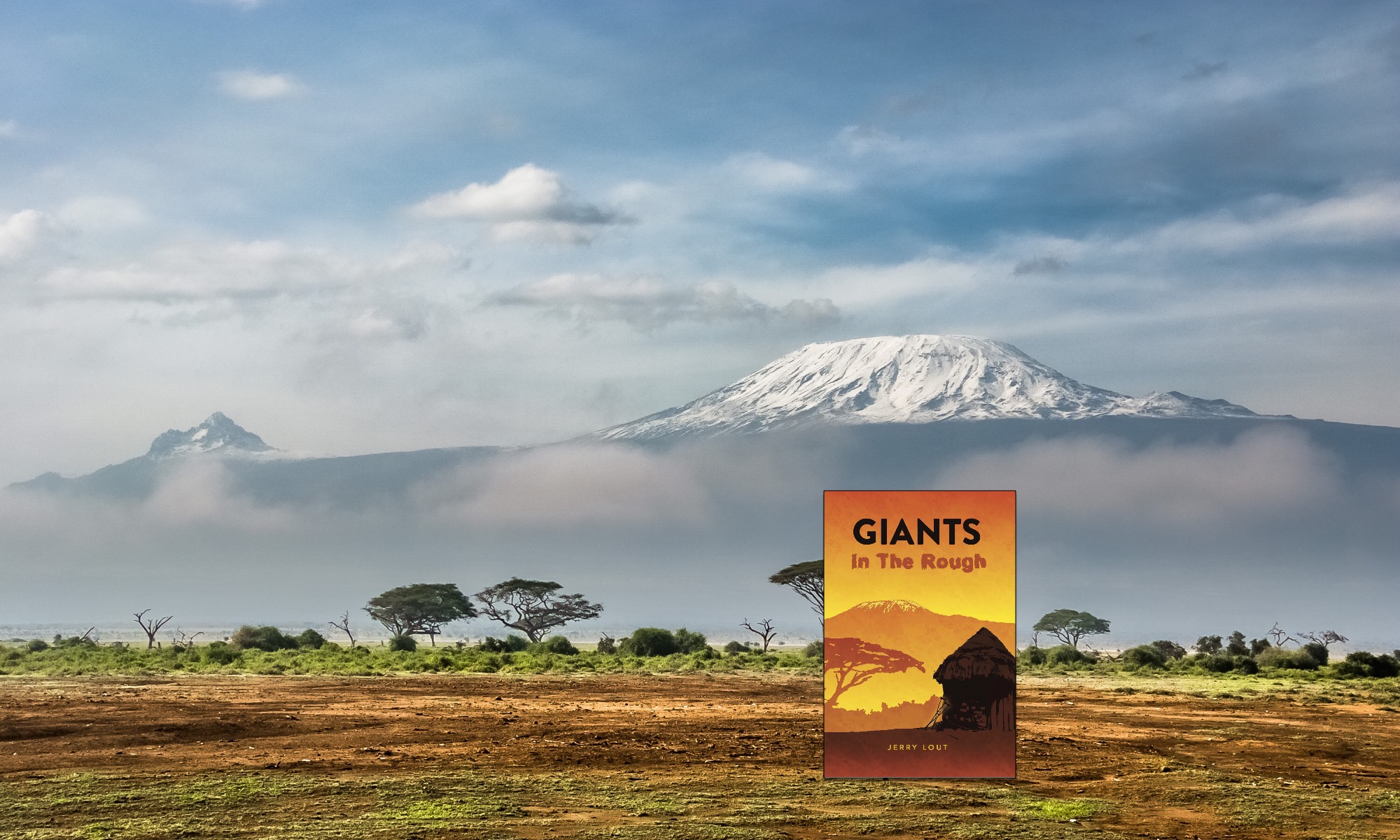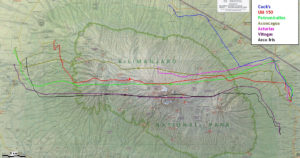August, 1988. . .
Really? I couldn’t believe the signatures facing me from the entry roster. Him? Really?
“Hey guys, look over here. Guess who beat us up the mountain ten days ago. . . a president of the United States!” My two teens, their backpacks secured in place, sidled over.
Some twenty names, including family members, were all penned vividly in artful hand-written cursive, clearly by one person. . . a scribe representing the entourage, no doubt.
A further surprise came later in the day as I chatted up our guide.
“Joseph,” I asked, “I noticed back there that a United States President went up the mountain a few days ago.”
“Yes, that is correct.”
“That’s Interesting. Were you one of the porters or guides for the climb?”
“Yes, sir.
“Well – if I could ask – what was it like, that trip?”
“Ah”, Joseph smiled broadly. We had paused on the trail to take a swig from our canteens. “It was a very good trip”. The guide’s face brightened further. “Yes, a good trip, even though the president almost refused to succeed. He did reach there, though. Up to the mountain’s top.”
Joseph’s voice now took on a deepened tone of pride (well-placed, I afterward thought).
“You know, we carried him there.”
“Carried him? You carried the president?”
“Ah, yes. You see, once we reached to a quite high place he was very tired and lacking strength. He told the group to go on and continue. He said he would go back down the mountain for he could not continue on.” Joseph swiveled to gaze toward the summit, many kilometers far ahead and far higher.
“But we told him ‘no’. We Guides, we said to him he must reach to the top, he must get there. So two of us came to where he was. Together we lifted him. We carried him on to the top.”
Assuming the guide’s account was accurate, the past president – raised in the deep south and now well into his sixties – had found himself perched atop the roof of Africa. In good hands. Literally.
The image in my mind of mountain guides bearing their distinctive human cargo along Kilimanjaro’s steepest slopes called to mind a beloved piece of popular verse. Adorning the walls of gift shops from Disney World to Branson, Missouri – Footprints in the Sand.
My mind goes to the spiritual trek any sincere believer embarks on.
While it is true there are times we are unable to lift a trace of our own shoe leather in making headway on our march of faith, our call from him, our invitation is to walk. Not walk apart from him, to be sure. As Bob Sorge states it in The Secret of Walking With God, “God created man for the enjoyment of a walking relationship that involved companionship, dialogue, intimacy, joint decision-making, mutual delight, and shared dominion.”
And here is the rub. I am called to sonship in Christ, called to know him. Know him more and more, by walking with him.
So how? Just how does this happen in actual, realistic ways?
A visit with the one we call our guide, along with a few of his early spokesmen as their words reach to us from scripture, helped shed some light on the big question, How?
© 2018 Jerry Lout


